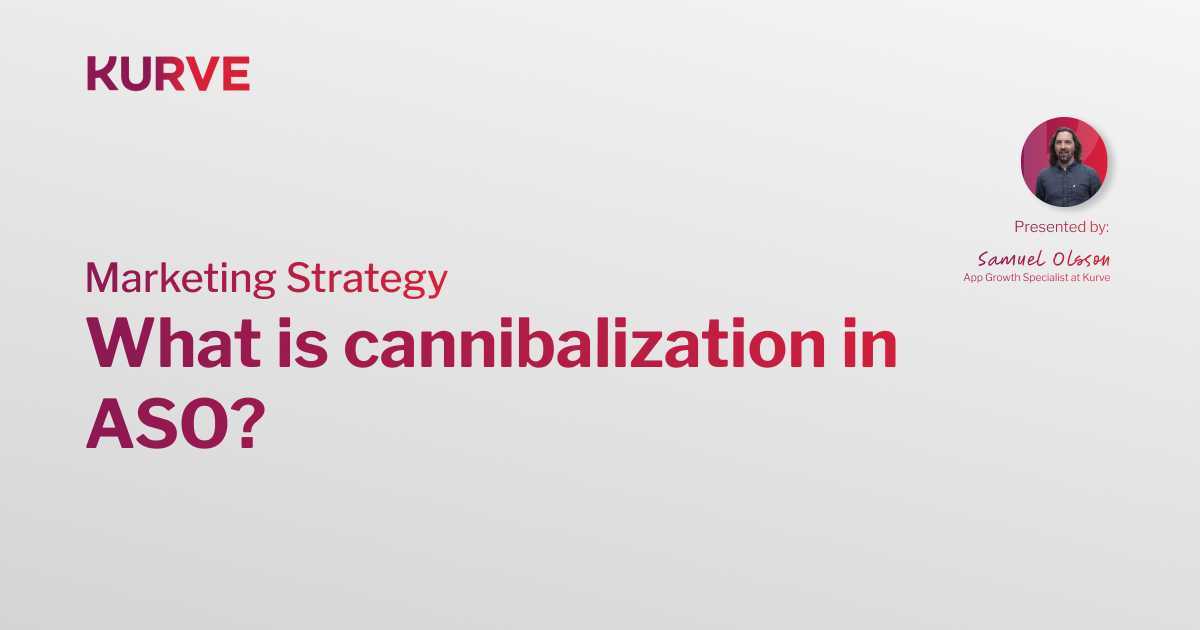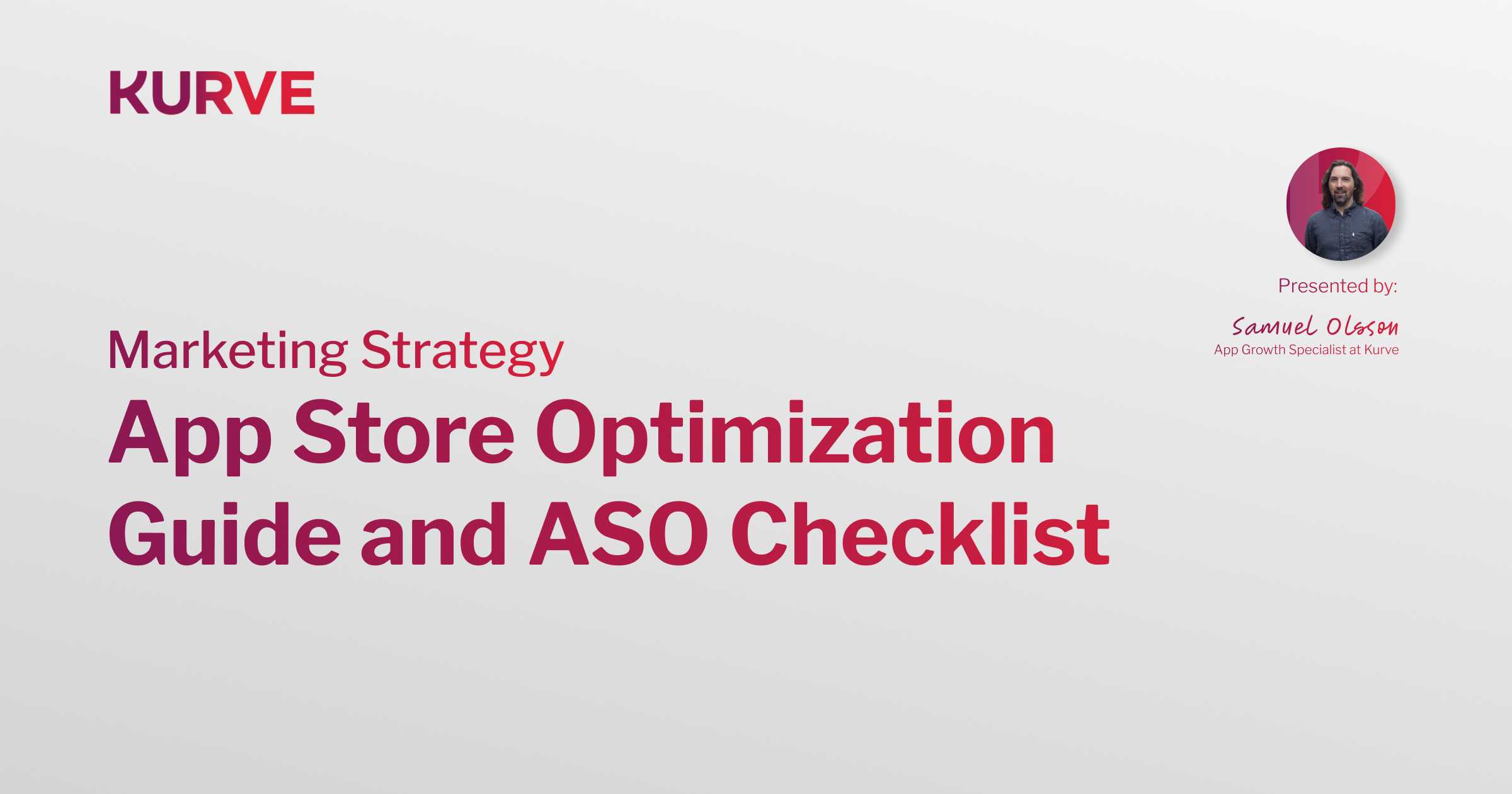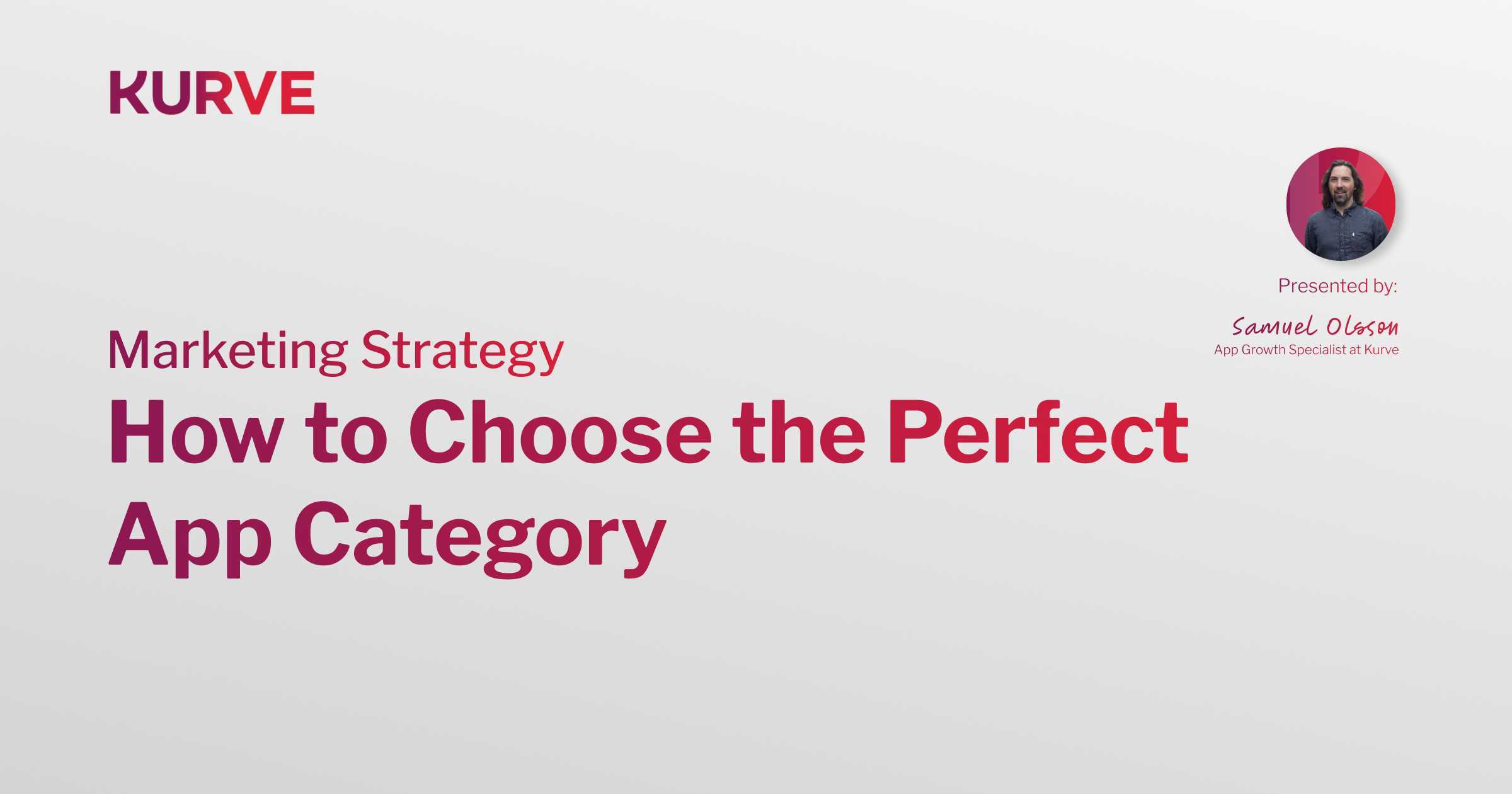App Engagement and User Retention: 2023 Guide
It’s easy to find advice on increasing app users and improving your discovery phase for user acquisition. But what happens if mobile users just disappear after they buy? It’s like throwing a party where people show up but leave early. In the same way, buying into an app doesn’t guarantee a user will continue their journey.
At Kurve, we understand the importance of engaging users and keeping them returning for more. So our expert team has put together this beginner's guide that will dive deep into app user engagement and retention.
We'll explore the different types of user engagement, marketing best practices, the key metrics that show you what's working, and the engagement tools and platforms that can help you succeed.
If you need help to increase your app retention rates, we can help. Contact us at Kurve to learn more about our mobile app marketing services.
Understanding App Engagement Metrics
The onboarding process is the threshold welcome for a new app user, making it a pivotal part of their experience. Like a first date, making a good impression and demonstrating the value your app can add to their lives is vital. Then, once a user is successfully onboarded, your goal is to keep them engaged with the app's features and ads.
Engagement for onboarding and onboarded users differ because of their needs and goals. For onboarding users, engagement is more urgent and focused on getting them to stick with the app after installation, even if they are momentarily distracted. With onboarded users, engagement is more relaxed and long-term, focused on showcasing enhanced features and helping users learn more about what the app can do.
This article will focus on engagement with onboarding users - the crucial first impression that can make or break your app's success.
User Behavior
Understanding user behavior is crucial to successfully targeting them with effective engagement strategies. Rather than solely focusing on promoting your brand or product, prioritize campaigns to change the external triggers that bring users to your app and shift them towards internal triggers.
Pinterest is an excellent example of how behavioral targeting can work effectively. Let's say a user clicks on their friend's social media post about a shed they want, which leads them to check out Pinterest. Upon arriving, the user will see hundreds of images of sheds. By their second visit, they understand that Pinterest can provide them with inspiring things that they want in their life.
This shift in user behavior has transformed Pinterest from a one-time visit to a go-to destination for inspiration.
Engagement vs. Retention
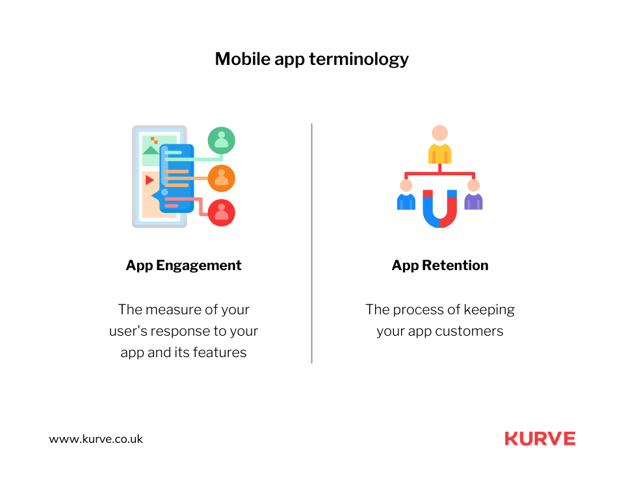
Engagement and retention metrics gauge an app’s ‘stickiness’. Happy customers, who are super glued to their app, are more loyal and likely to spend more.
Users' interactions and behaviors within the app are referred to as engagement. The significance of user engagement lies in creating a solid emotional connection with the user, and delivering an enjoyable user experience, making them more likely to use the app.
On the other hand, retention is about keeping users interested and active in the long run. Retention focuses on keeping customers interested and inspired to keep using the app. It's essential to keep the app updated with new features, rewards, and incentives to keep users interested.
Focusing on App Engagement and User Retention
Now that we know the significance of user behavior and how it can be used to target users with efficient engagement techniques, it's time to look into app engagement and user retention. These two elements are essential to any mobile application's success and necessitate a focused strategy for long-term expansion.
In this section, we will explore why app engagement should be prioritized, the impact of user retention on the overall health of an app, and how app engagement can increase user retention.
Let's get started.
Why Prioritize App Engagement?
Prioritizing app engagement means ensuring your users have a positive experience with your app, which leads to increased user satisfaction and loyalty. Your users will be more engaged and likely to return if your app is well-designed and offers a fantastic user experience. By prioritizing app engagement, you can increase the chances of users becoming loyal, repeat customers and advocates for your app.
It's critical to comprehend what people require and desire from your software if you want to put user engagement first. Conduct user research and gather feedback from your users to identify pain points and areas for improvement. Use this information to update and improve your app to engage your users.
What is the Impact of User Retention?
User retention measures how many users continue to use your app over time. It's a key metric for app success because it indicates user satisfaction and loyalty. When users continue to use your app, it means they find value in it and are more likely to recommend it to others.
Increasing user retention has a positive impact on your app's bottom line. Loyal, repeat customers are more likely to make in-app purchases and generate revenue for your app. Additionally, acquiring new users is more expensive than retaining existing ones; focusing on user retention can save money and increase revenue for your app.
How Does App Engagement Increase User Retention?
App engagement and user retention are closely linked. Engaged users are more likely to continue using your app over time, increasing user retention. To increase app engagement, provide a seamless and enjoyable user experience. This can include personalizing content, offering incentives and rewards, and providing timely and relevant notifications.
In addition to a great user experience, regular updates and improvements to your app can help keep users engaged and interested. This can include adding new features and functionality, fixing bugs and responding to user feedback. By prioritizing app engagement and retention, you can build a loyal user base and set your app up for long-term success.
Increasing App Engagement: Best Practices
This section will dive into best practices for increasing user engagement and improving retention rates.
These strategies are designed to help you create a meaningful and valuable experience for your users, encouraging them to use your app and recommend it to others. From optimizing user onboarding to personalizing content and leveraging push notifications, these tactics will help you keep users engaged and coming back for more.
So, let's explore some of the most effective ways to increase app engagement and drive user retention.
Personalize for Unique User Experience
Creating a personalized experience for each user is crucial for improving engagement and retention rates. By gathering user data and analyzing it, you can gain valuable insights into their interests, preferences and behaviors. This information can tailor the app experience to each user, providing them with content and features relevant to their needs.
Personalization can take many forms, such as recommending content based on past activity, using geolocation data to suggest nearby events or businesses, or providing customized user interfaces based on user preferences. Creating a unique and tailored experience for each user can increase engagement and retention rates and ultimately build a loyal user base.
In-App Gamification
In-app gamification involves incorporating game-like elements into the app experience to make it more engaging and enjoyable for users. This can include things like badges, leaderboards, challenges, and rewards. By gamifying the app experience, you can tap into users' natural desire for competition and achievement, encouraging them to spend more time within the app and engage with its features.
Gamification can also incentivize desired user behaviors, such as completing specific tasks or inviting friends to join the app. By providing users with a sense of accomplishment and recognition, you can improve engagement and retention rates and create a more fun app experience.
Improve User Journey
Improving the user journey involves identifying pain points and friction within the app experience and working to streamline and optimize it. This can include simplifying the user interface, reducing the steps required to complete a task, or providing helpful tutorials and tips.
By improving the user journey, you can create a smoother and more enjoyable app experience for users, reducing the likelihood of frustration or confusion and increasing the possibility of engagement and retention. This can ultimately lead to higher user satisfaction and loyalty, increased word-of-mouth referrals, and positive app store reviews.
Maximize Emails to Encourage Users
Sending regular emails to your users is an excellent way to keep them engaged and encourage app usage. You can use emails to highlight new features or promotions and offer tips and insights to help users make the most of your app.
Segment your email list based on user behavior and preferences to ensure your messages are personalized and relevant. You can also use automated email campaigns triggered by specific actions like app installs or purchases to encourage ongoing engagement.
Remember to optimize your email content for mobile devices and make it easy for users to take action by including clear calls-to-action and links to relevant app pages.
Communication - The First 24 Hours
The first 24 hours after a user installs your app are critical for building engagement and ensuring long-term retention. During this time, it's important to communicate with your users clearly and compellingly to guide them through the onboarding process and showcase the value of your app.
Use push notifications, in-app messages, and emails to reach out to users and provide them with tips, tutorials, and other helpful information. Encourage users to complete specific actions, such as setting up a profile or completing a tutorial, to help them get started with your app.
By providing a positive and engaging experience from the beginning, you can increase users' likelihood of using your app over time.
Optimize App Regularly
To keep users engaged, optimizing and continuously improving its features and functionality is essential. This can involve lots of things - like fixing bugs, shipping new features - to create a better experience.
Be sure to monitor app usage metrics and track user behavior to identify areas for improvement. Use A/B testing to test different app versions and see what resonates most with your users.
Regularly releasing updates and improvements will improve engagement and retention rates and show users that you care about delivering them the best possible experience.
Offer Exclusive Deals
Maximize the potential of email marketing by offering exclusive deals to users who sign up for your email list. These deals can include discounts, free trial periods, or exclusive access to new features. Users tend to be more likely to sign up and be engaged with your app when you offer something valuable.
Another way to encourage engagement is by leveraging push notifications. Push notifications can be personalized to the user's preferences and behavior, providing targeted messages that are relevant and useful. By using push notifications to highlight new features, promotions, or personalized content, you can keep users engaged and coming back for more.
Use Push Notifications
One effective way to guide users through your app and encourage engagement is by providing a preview or tutorial. This can be done through a walkthrough that guides users through the app's interface and features. By providing a clear and concise introduction to your app, users will feel more comfortable and confident using it, ultimately increasing their engagement and retention rates.
Walkthrough Users With Preview and Tutorial
Regularly optimizing your app is crucial for meeting user expectations and staying ahead of the competition. This can include fixing bugs, improving user experience, and introducing new features. You may give customers a seamless and engaging experience through regular app updates and optimisation, increasing user engagement and retention rates.
Also, constantly updated apps are favored by app store algorithms, increasing the likelihood that new users will find and download your app.
Drive User Engagement With In-App Resource Center
An in-app resource center can be a valuable tool for driving user engagement. This feature is a hub for helpful resources and information, such as frequently asked questions, tutorials, and guides. You can enhance users' experiences and persuade them to keep using the app by giving them simple access to this data within the app.
To make the most of your in-app resource center, consider categorizing the content and including a search feature to make it easier for users to find what they need. Analytics can be used to monitor the most well-liked resources and make changes in response to user comments.
Ultimately, an in-app resource center may greatly enhance user engagement and retention by giving users the knowledge they need to utilize your app efficiently.
Improve and Implement User Feedback
User feedback is essential for improving your app and increasing user engagement. You may learn a lot about what works effectively and what needs improvement by asking users for comments.
Consider implementing a survey or feedback form within the app to collect feedback. For example, users might be urged to post reviews on social media or app stores.
Once you have collected feedback, be sure to act on it. Address users' issues or concerns and make changes to improve their experience. Feedback can also decide which new features or enhancements the app needs.
You can improve user engagement and increase user satisfaction by prioritizing user feedback and making changes based on user input.
App Engagement Channels and Tools
Now that we've covered best practices for increasing app engagement and user retention, let's explore the channels and tools to help you implement these strategies.
These options, which range from in-app messaging to push notifications, can help you interact with your consumers and enhance their overall experience.
App Engagement Channels
App engagement channels refer to various ways app owners can reach out to users, including push notifications, in-app messages, email/SMS, and deep linking.
Push Notifications
Push notifications are a powerful tool for reaching your users in real-time and keeping them engaged with your app. With the ability to send targeted, personalized messages to your users' lock screens, push notifications are a great way to promote new features, send reminders, and re-engage users who last opened your app a while ago.
However, it's vital to use push notifications judiciously, as too many messages can annoy users and cause them to turn off notifications for your app. A well-crafted push notification strategy can be a key driver of app engagement and user retention.
In-App Messages
In-app messages appear within your app; they're a powerful way to communicate with your users while engaged with your app. For example, you can use in-app messages to promote new features, announce limited-time offers, or even ask for feedback on your app.
In-app messages are less intrusive than push notifications, and they're a great way to drive engagement and conversions. Targeting certain user groups enables you to send messages that relate to your users and inspire them to take action.
Email/SMS
Email and SMS are traditional communication channels that are still effective for app engagement. By collecting your users' email addresses and phone numbers, you can send targeted messages to their inboxes or SMS inboxes. These channels are great for promoting new features, offering exclusive deals, or announcing limited-time offers.
The key to email and SMS success is sending relevant, personalized messages that provide value to your users. You can drive engagement and boost retention by segmenting your user base and delivering targeted messages.
Deep linking
Deep linking is a method that enables you to link specifically to material inside your app. This means you can send users to a particular screen or page within your app rather than just opening the app's homepage.
Deep linking is a powerful strategy to boost engagement and conversions since it gives users a pleasant user experience and makes it easy for them to find what they're looking for. You can use deep linking with other channels like push notifications or email to drive users directly to the most relevant content.
App Engagement Tools
When it comes to app engagement, choosing the right tools can make all the difference. With so many options available, it can be overwhelming for app developers and owners to decide which tools to use.
However, by correctly selecting and applying the most effective tools, you can significantly improve engagement and satisfy your customers.
Here are a few tools that are known to work well in practice:
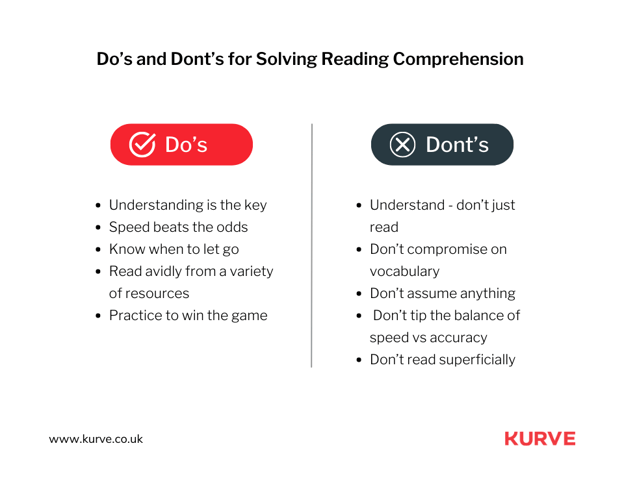
Do Use:
- SendinBlue is a no-code offering that provides email and SMS campaigns. It is scalable, reliable, and priced to match your growth rate. Most importantly, SendinBlue offers several features that help you communicate with customers in a highly personalized way, including marketing automation, transactional emails, and targeted marketing through segmentation. It is ideal for increasing engagement and keeping your customers engaged.
- Braze is a customer engagement platform that drives growth across the lifecycle and excels through its push and in-app notifications. Braze is a vertically-integrated solution that can add value to your messaging through testing and optimization, drive more purchases with gamification, and boost revenue with data-driven A/B testing.
Do Not:
- Avoid using MailChimp if you plan to do anything a bit more sophisticated. While it can be helpful for early-stage startups, it can quickly become part of your expensive legacy tech stack.
- Avoid building your solution, which can waste valuable time and resources. Instead, focus on using available and practical tools.
- Avoid using HubSpot or Salesforce for mobile app engagement or CRM activities for consumer-facing apps. Keep them out of your tech stack for app engagement. Look to solutions like Zapier or Integromat to get things into HubSpot when and where you need them.
Measuring App Engagement
You can only discover new areas for improvement or become aware of how users interact with your app if you measure app engagement. You can monitor user behavior, identify trends, and adjust your strategy to optimize the user experience by tracking key app engagement metrics.
There are several important app engagement metrics that you should be tracking.
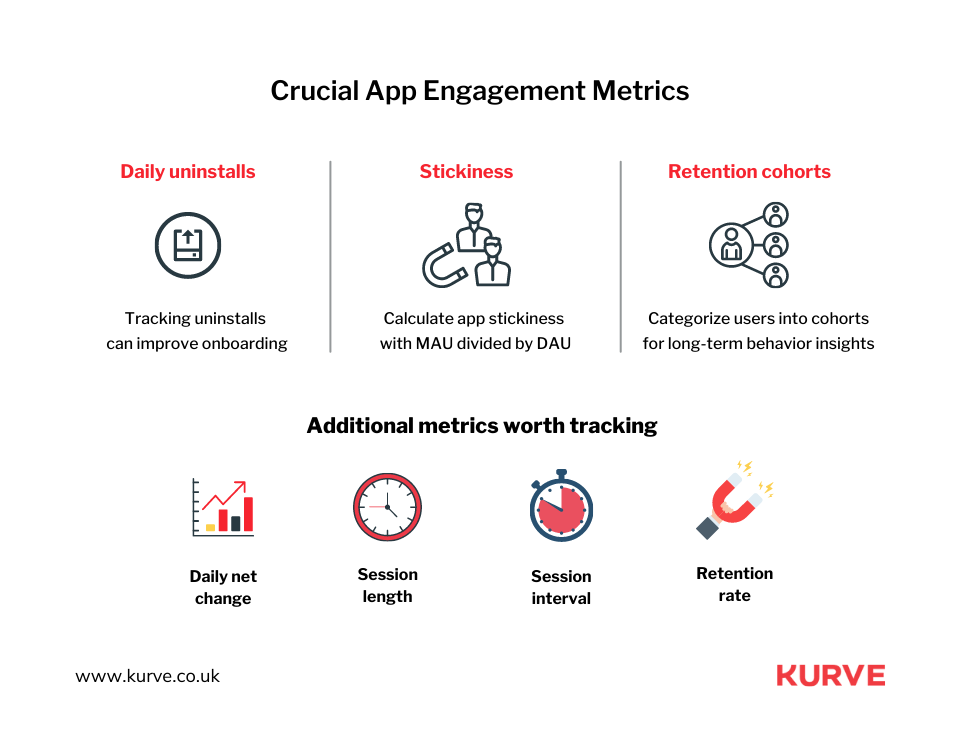
Daily Uninstalls
This metric measures the number of app uninstalls that occur daily. A high daily uninstall rate may indicate that users are dissatisfied with your app or that it needs to meet their needs. Tracking daily can help you identify potential issues with your app and take steps to improve user retention.
Product Adoption Rate
This metric measures how quickly users adopt new features or updates within your app. If your app has a high product adoption rate, your consumers are interested in and satisfied with your product. You can determine which features people like by tracking this measure and which ones need to be changed.
Customer Engagement Score
This metric measures the overall engagement of your users with your app. It considers several factors, including the number of sessions per user, the length, and the actions taken during those sessions. You can learn more about how users engage with your app and where improvements can be made by monitoring your customer engagement score.
User Retention Rate
This metric counts the percentage of users using your app consistently over time. A high user retention rate shows that your software is valuable to consumers and that it fulfills their demands. Tracking this metric can help you identify potential issues with user experience and take steps to improve retention.
App Stickiness
This indicator tracks how frequently users come back to your app. It considers the frequency and duration of user sessions and the actions taken during those sessions. A high app stickiness score indicates that users find your app valuable and engaging. You may determine the most popular features of your software and where to make enhancements by monitoring this metric.
Other Metrics
Several other metrics can measure app engagement, including session length, daily active users, and click-through rates. You can gain a thorough picture of how users engage with your app and identify areas for improvement by tracking various metrics.
Determining opportunities for improvement and learning how users interact with your app depends critically on tracking app engagement. You can monitor user behavior, identify trends, and adjust your strategy to optimize the user experience by tracking key app engagement metrics.
Active Users = Loyal Users = Loyal Customers
The reality for mobile app developers is that users have an overwhelming plethora of choices. In such a competitive digital market, developing a strategy to increase customer loyalty and user engagement is fundamental for companies seeking to engage, convert, and monetize users.
Investing in user engagement doesn't just mean that you'll optimize the UX and customer journey beyond installation. Focus on the principles of onboarding engagement, meaning functionality, communication, and the right tools, because these pave the way for you to build solid foundations for relationships with your users.
It's the beginning of a strong relationship. You're opening the door, revealing the app's immediate vital flourishes, making users feel at home and welcomed, and gifting them with signposted essential initial knowledge. The next step in engagement is returning once onboarded, comfortable, and ready to take in more of their surroundings.
Key Takeaways
In conclusion, focusing on app engagement and user retention is crucial for your mobile app's long-term growth and success.
You can provide your consumers a meaningful and worthwhile experience by putting engagement first and motivating them to use and share your app with others. By measuring and monitoring key metrics like daily uninstalls, adoption rate, engagement score, retention rate, and app stickiness, you can continuously optimize and improve the user experience.
At Kurve, we understand the importance of app engagement and user retention, and we offer a range of Mobile App Marketing Services to help you achieve your goals. From user acquisition and engagement to app store optimization and analytics, we have the expertise and experience to help your app succeed.
So if you're looking for a marketing partner to help you drive app engagement, increase user retention, and grow your business, consider KURVE. We can help you crush your mobile app marketing objectives!
